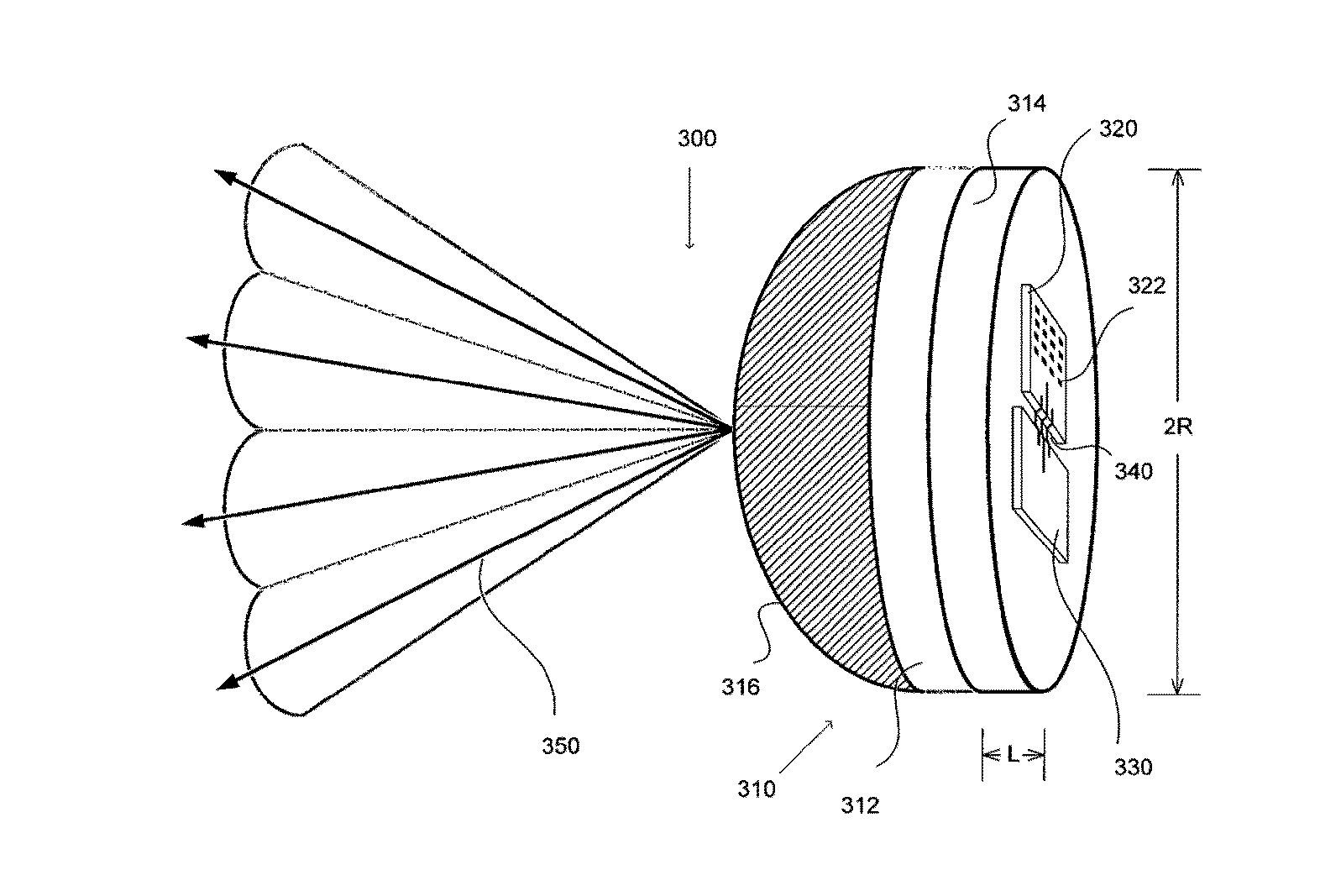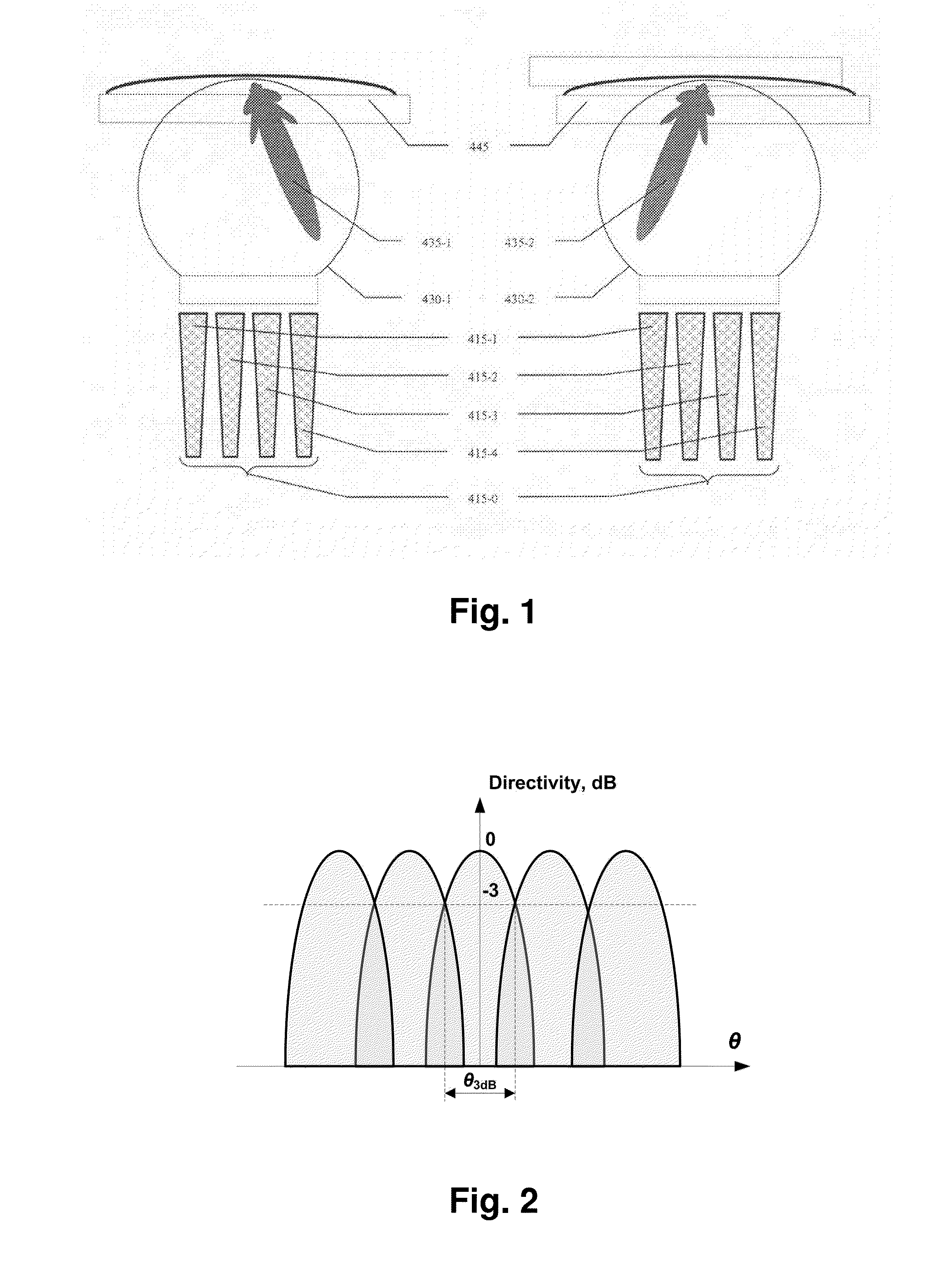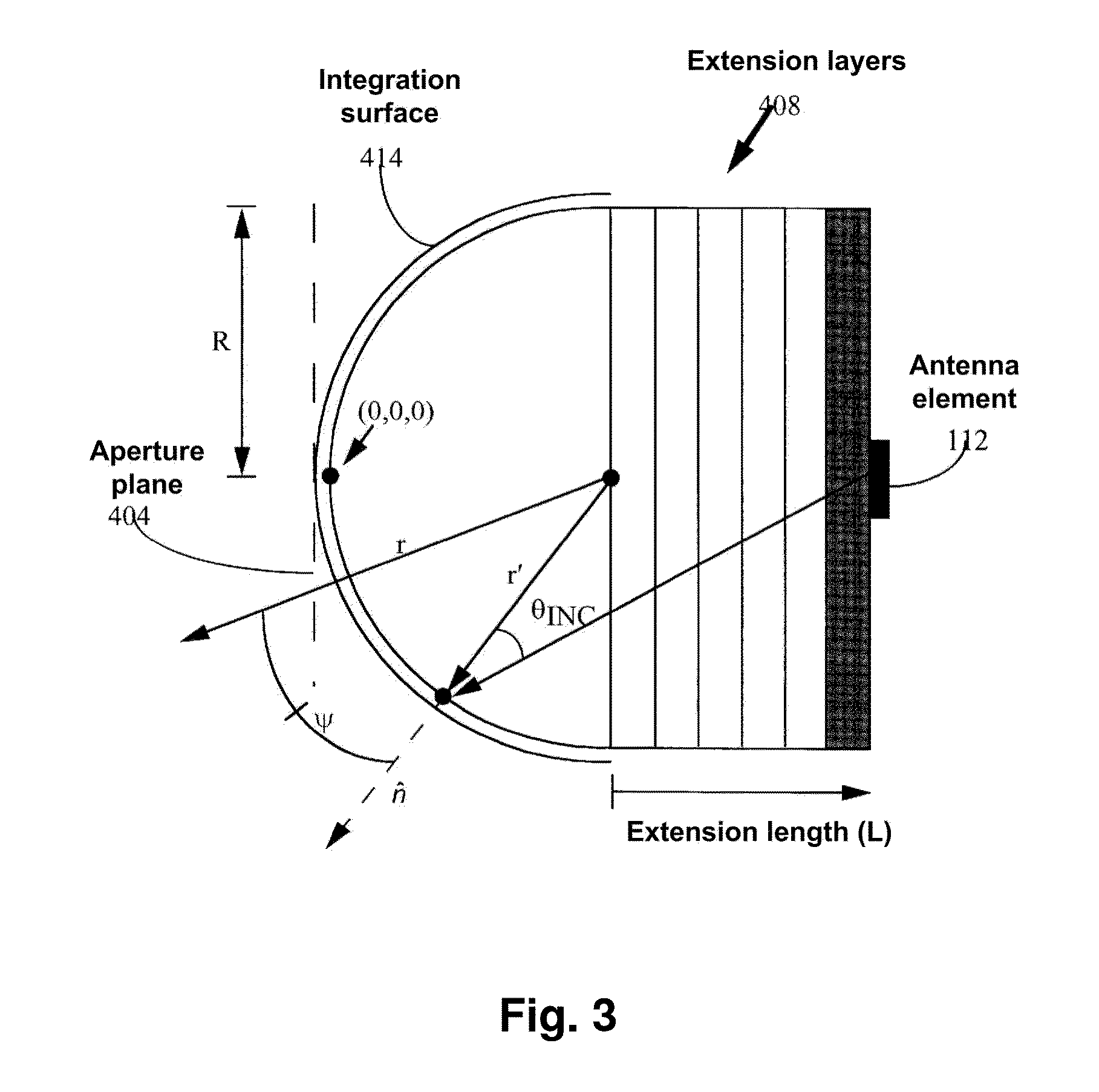Lens antenna with electronic beam steering capabilities
a beam steering capability and antenna technology, applied in the field of radio engineering, can solve the problems of reducing radiation efficiency and antenna gain value, difficult to optimize the characteristics of antenna elements in those antennas, and difficulty in adjusting the alignment probability of antennas, etc., to achieve the effect of increasing radiation efficiency, increasing directivity value, and increasing gain
- Summary
- Abstract
- Description
- Claims
- Application Information
AI Technical Summary
Benefits of technology
Problems solved by technology
Method used
Image
Examples
Embodiment Construction
[0071]To achieve the described objects of characteristics optimization of integrated lens antennas with large dimensions (diameter is >10-20 times of wavelength in free space) it is proposed to use horn feed antenna elements in such antennas that are placed on the plane surface of the lens as it is shown in FIG. 6.
[0072]The preferred shape of the large lens providing all the required antenna characteristics for use in radio-relay communication systems is elliptical shape made of homogeneous dielectric with certain dielectric permittivity.
[0073]Variation of the lens geometrical parameters (either of elliptical part or the length of cylindrical extension) cannot be used for optimization of the antenna characteristics due to phase front degradations aroused on the equivalent aperture of the antenna. However, such optimization is possible by variations of the primary antenna element radiation characteristics that lead to increase in directivity of an integrated lens antenna. In particul...
PUM
 Login to View More
Login to View More Abstract
Description
Claims
Application Information
 Login to View More
Login to View More - R&D
- Intellectual Property
- Life Sciences
- Materials
- Tech Scout
- Unparalleled Data Quality
- Higher Quality Content
- 60% Fewer Hallucinations
Browse by: Latest US Patents, China's latest patents, Technical Efficacy Thesaurus, Application Domain, Technology Topic, Popular Technical Reports.
© 2025 PatSnap. All rights reserved.Legal|Privacy policy|Modern Slavery Act Transparency Statement|Sitemap|About US| Contact US: help@patsnap.com



